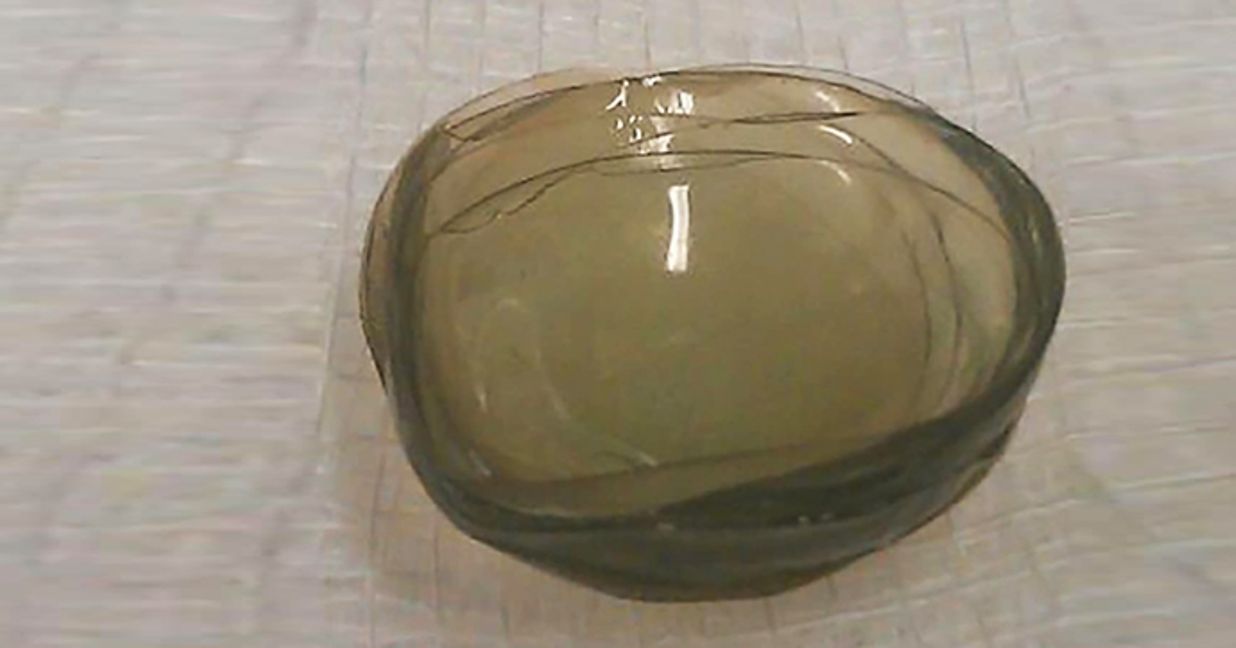By John Lahr, O.D., EyeMed vice president/medical director
Nothing should get between a person and his or her contacts, especially not Super Glue.
But that’s what I once found on a contact lens stuck to a patient’s finger. It’s among a list of foreign substances that can sneak into or onto a contact lens by accident. I once read in a British medical journal about a woman who had 27 contact lenses stuck in her eyes for years. Thankfully she had those lenses safely removed (pictured above).
It’s Contact Lens Safety Month (and Halloween season), which made me think to share other gross contact lens findings. It’s all in the name of promoting safer contact lens practices since more than 8 in 10 people who wear contacts — and there’s 46 million Americans who do — admit to putting themselves at risk of eye infections. [1]
Spooky black market
Lens safety is especially crucial this time of year when Halloween ushers in a black market of decorative lenses sold illegally without prescriptions.[ 2] Yet of the 16% of Americans who have worn decorative contact lenses, 26% bought them without a prescription. [3] They’re risking bacterial infections, allergic reactions and damage to the eyes. [4]
But a valid prescription by a doctor is just the start of safe contact lens use. All lenses require diligent cleaning, storage and replacement.
Ready to get grossed out? Read on.
Fungus and makeup and bacteria, oh my!
I’ve discovered a lot of ugly matter on and in contact lenses over the years. Most often it’s because wearers push the limits on hygiene and how they wear contacts.
It helps to remember that a soft contact lens is like a sponge; it will absorb much of whatever it comes into contact with. The eye has a lot of protective mechanisms, but if you assault it over a period of time, bad things are going to happen.
Among what I’ve seen on patients’ contact lenses:
1. Algae and fungal growth: Lakes are great for swimming, but not for eye baths. Contact lens wearers shouldn’t dive in without tight, protective goggles — or they risk inviting lagoon creatures into their eyes.
2. Cosmetics: Makeup and potentially bacteria in a cosmetics container can transfer to contacts when it seeps into one’s tears. Cosmetics should be cleaned off nightly after lenses are removed and applied after lenses are inserted. Same goes for skin creams. Wearers should always wash their hands before handling their lenses. [5]
3. Micro-organisms: Bacteria and fungus love a moist, warm and dark environment. Soft contact lens solutions have properties that kill infection-causing micro-organisms, but they don’t work fully if the lens case isn’t cleaned, emptied and refilled nightly. Topping the solution off just weakens the mix, which won’t cut it.
4. Grime: If there’s dirt on the contact lens case or in its threads, it’s probably in the chamber with the lenses, too. Contact lens cases are designed to be thrown away and replaced regularly. People who keep their lenses and cases around too long risk being haunted by dirt and grime that’s unavoidable over time.
5. Tear proteins: Our eyes produce lubricating tears that contain more than 1,500 proteins.[6] When contact lenses are worn for extended periods, these proteins clog them and prevent the eyes from getting needed oxygen. Never sleep while wearing contacts unless they are extended-wear lenses that have been evaluated by your doctor for overnight wear.
Safe contact lens care and use simply comes down to common sense. Just remember what they taught you when you were first fit with lenses. Here’s a short article on 10 bad contact lens habits that can be shared with employees. Or, if you forget, please ask your eye doctor.
In fact, all contact lens wearers should get regular contact lens evaluations by a doctor for proper fit and vision because the external health of the eye, not just prescription strength, can change. [7] When the eye curvature changes and the contact lenses aren’t refitted, the wearer can experience complications that can ultimately result in corneal ulcers. [8]
Don’t be scared off — how vision benefits help
I’ll close with two important rules for your work force and contact lens safety:
I hope this helps keep your employees who wear contacts from having their own gross contact lens stories to tell, and keep their eyes healthy with clear vision all year long.
BL-1810-CB-895
2: “ ‘Colored’ and Decorative Contact Lenses: A Prescription Is A Must,” U.S. Food & Drug Administration, Feb. 26, 2016, https://www.fda.gov/ForConsumers/ConsumerUpdates/ucm275069.htm 3: “Don't Buy Contact Lenses from Any Store or Website If It Doesn't Require a Prescription,” American Optometric Association, https://www.aoa.org/patients-and-public/caring-for-your-vision/contact-lenses/decorative-lens-warning 4: “Don't Buy Contact Lenses from Any Store or Website If It Doesn't Require a Prescription,” American Optometric Association, https://www.aoa.org/patients-and-public/caring-for-your-vision/contact-lenses/decorative-lens-warning 5: “Facts About Dry Eye,” National Eye Institute, July 2017, https://nei.nih.gov/health/dryeye/dryeye 6: “Tips for Contact Lens Wearers,” By Liz Segre, August 2017, AllAboutVision.com, https://www.allaboutvision.com/contacts/contact-lens-tips.htm 7: “ ‘Colored’ and Decorative Contact Lenses: A Prescription Is A Must,” U.S. Food & Drug Administration, Feb. 26, 2016, https://www.fda.gov/ForConsumers/ConsumerUpdates/ucm275069.htm 8. “Corneal Ulcers — Causes and Treatments,” by Chris. A. Knobbe, M.D., November, 2016 AllAboutVision.com, https://www.allaboutvision.com/conditions/corneal-ulcer.htm
1. “More Than 80 Percent of Contact Lens Wearers Are At Risk for an Eye Infection from Unsafe Use,” Prevent Blindness, https://www.preventblindness.org/more-80-percent-contact-lens-wearers-are-risk-eye-infection-unsafe-use




